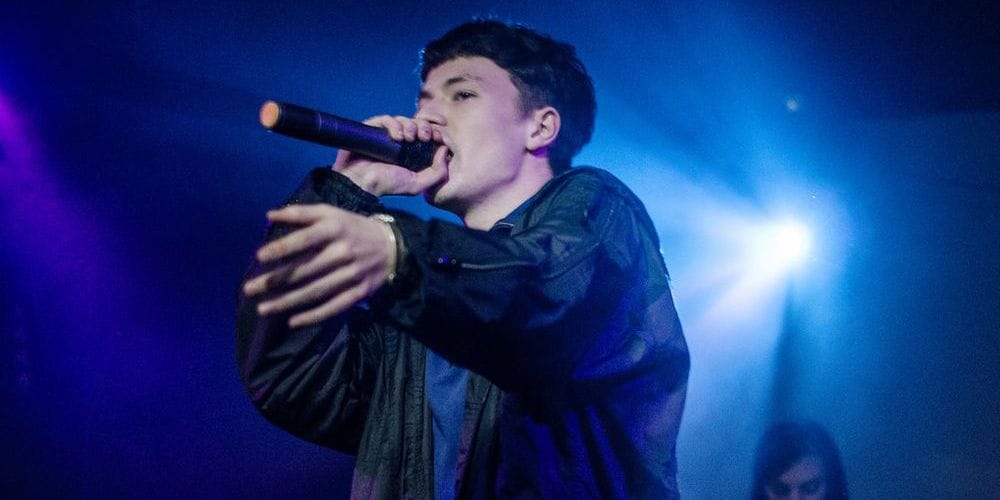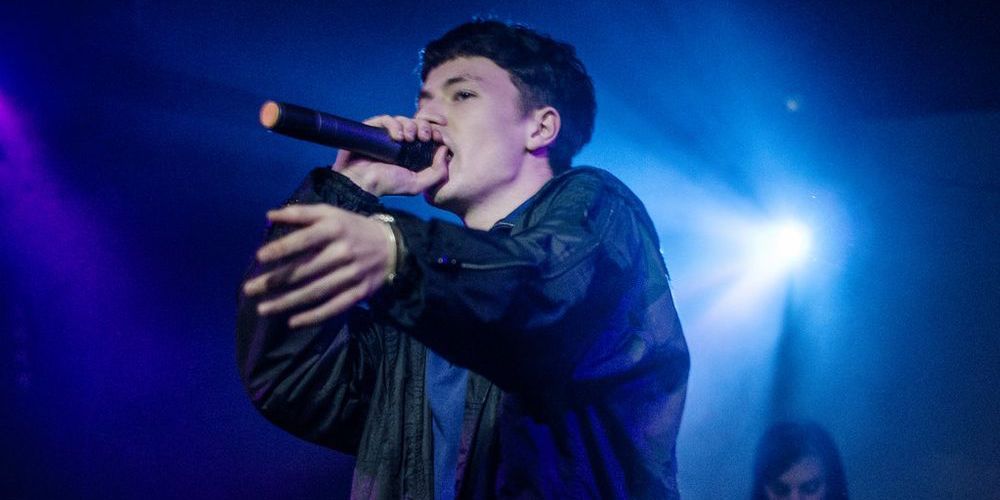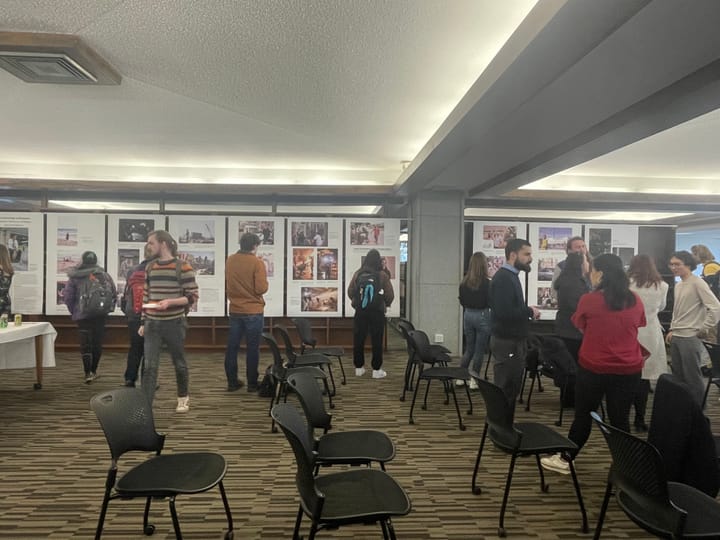WAMH × The Student: Covering the Popular Collective Drain Gang
Sweden is hardly the first place that comes to mind when anyone thinks about hip-hop music, but the Stockholm-based artist collective Drain Gang have developed significant influence in the scene. WAMH host Nii Aryeetey '23 covers the group’s rise.


This article is part of a collaboration between the WAMH blog and The Student's Arts and Living Section.
Sweden is likely not the first place you associate with hip-hop, a genre that had its beginnings in the 1970s in New York City. However, Stockholm-based artistic collective Drain Gang, is a strong force in the world of underground hip-hop today.
Drain Gang was formed in 2013 by the musicians Bladee, Ecco2k and Thaiboy Digital, alongside producers Whitearmor and Yung Sherman. The idea for the collective came up during a night of partying in Stockholm. Thaiboy Digital and Bladee were freestyle rapping using Whitearmor’s beats, and the three decided to form a group based around rapping and singing using autotune.
Drain Gang’s music builds on the characteristics of hip-hop that preceded it but still creates a unique, new sound. The group’s music consists of ethereal, dreamy beats, often punctuated by trap-influenced hi-hats. They almost always autotune their vocals heavily, an intentional artistic choice pioneered by mid-2000s albums like T-Pain’s “Rappa Ternt Sanga” and Kanye West’s “808s and Heartbreak.” These are characteristics of cloud rap, a genre Drain Gang has had a significant hand in developing.
Cloud rap and Drain Gang emerged almost simultaneously. Cloud rap was originally developed in the late 2000s in the southern United States when producers began utilizing dreamier samples in their beats along with the ubiquitous Roland TR-808 drum machine, which is often used in trap. The genre was quickly recognized by online music communities as a novel take on hip-hop. Producer Clams Casino is often credited with bringing the genre to both underground and mainstream audiences, producing Lil B’s “I’m God” in 2009 and many songs from A$AP Rocky’s “LIVE.LOVE.A$AP” in 2011. Lil B is an independent rapper with a cult following online, and A$AP Rocky has gone on to become one of the biggest names in hip-hop.
The Drain Gang strain of cloud rap is more closely related to Lil B, as the bulk of their popularity is due to their dedicated internet following. “Drainers,” as Drain Gang fans often call themselves, are constantly creating memes about the group and carefully follow the collective’s every move. This is a daunting task, as the collective’s members rarely post online, despite how much their music is informed by internet culture. When they do post, it is often cryptic, much like their music.
While I describe Drain Gang’s music as hip-hop and cloud rap throughout this article, it is inaccurate to pigeonhole them within these labels. The group experiments with genres often, especially in newer releases like Bladee’s “The Fool” and Ecco2k’s “PXE.” Much of the “The Fool’s” 32-minute runtime is filled with layered synths characteristic of trance music, and “In The Flesh” from “PXE” is a sugary pop song featuring fuzzy guitar tones. The collective is not chained down to a single sound, a quality that is becoming increasingly common for much of modern music.
Many common threads run through Drain Gang’s lyrical content. The group’s music is simultaneously depressive and hedonistic, a concept that is less contradictory than it sounds. For example, in “Romeo,” Bladee celebrates his wealth by singing “feel like Romeo, Moncler coat when it's cold” in the first line of the song, then later laments “to feel something, I'd do anything.” Numerous other songs by the group discuss drug use in both celebratory and regretful ways.
The group also often sings about their struggles with mental health. Depression, anxiety and loneliness are common topics. Many of Bladee’s lyrics read like symptoms of depersonalization and derealization disorders. In “Who Goes There,” he sings “this world feels so distant,” and “my week is a dream, I’m just walking in my sleep.” This is also an example of how Drain Gang uses characteristics of emo music in their work to create a style of lyricism rarely seen in mainstream hip-hop. In addition, the group sparingly discusses romantic or sexual relationships, which is also uncommon in hip-hop and in modern music more generally.
The racial and national identities of the members also inform their art. This is especially true for Thaiboy Digital and Ecco2k. Thaiboy Digital was deported from Sweden in 2015 after his mother’s work visa expired, making it more difficult for him to collaborate with the other members. The group’s 2019 album “Trash Island” was mostly recorded in Bangkok and was inspired by the time that the group spent together in Thailand that year. Ecco2k’s music often discusses feeling like an outsider as a Black man in Sweden. He sings, “Everywhere I go, they look at me wrong” in his song “Peroxide.”
Another defining characteristic of Drain Gang’s style is the way they approach ideas of masculinity and femininity. All three vocalists in the group use an androgynous vocal style, and they discuss ideas of success and belonging in ways that eschew the masculine and aggressive ethos common to hip-hop. In the hook of Bladee’s song “It Girl,” he says, “In this world, you gotta work to be the It Girl,” using the archetype of the “It Girl” as a symbol of his own success, despite being a man. Ecco2k’s latest project “PXE” was released as an audio-visual project featuring a masculine character, “Ecco,” and a feminine character, “Echo,” which symbolize Ecco2k’s struggle with gender identity.
The visual art style of Drain Gang is also an integral part of their approach to art. In the cover art images of their discography, the group uses both maximalism and minimalism in compelling ways. The cover art of Bladee’s “Icedancer” and Thaiboy Digital’s “Legendary Member” are barrages of color filled with symbols, scribbles and indiscernible drawings. This is fitting, considering these two albums are two of the most densely produced works in the collective’s discography. On the other hand, the cover art of Ecco2k’s “E” consists of only a large e-mark and the album’s tracklist in small text. Concurrently, many of the album’s tracks are sparse.
All of these characteristics have heavily influenced the internet music scene — particularly the burgeoning genre of hyperpop. Hyperpop is a genre that developed almost fully through internet networking, beginning with the PC Music collective established in 2013, whose maximalist pop music homes in on the most sugary and catchy elements. Since cloud rap and hyperpop are two internet-based genres that have developed simultaneously, it isn’t surprising that the two genres have often influenced one another. Many hyperpop artists like Ditzk and d0llywood1 have discussed being influenced by Drain Gang. This can be heard clearly in their music — newer hyperpop uses elements of cloud rap such as skittering hi-hats, heavy bass and ethereal synths.
Drain Gang’s art is a direct representation of the ways late Millennials & Gen Z express themselves. The group discusses mental health, gender expression, drug enjoyment and drug addiction by combining absurdist elements — which are defining characteristics of Gen Z internet culture — and perfectly literal language. The group is compelling yet divisive due to their esoteric approach to hip-hop and music at large, making them one of the most exciting groups of artists in the modern underground music scene.





Comments ()